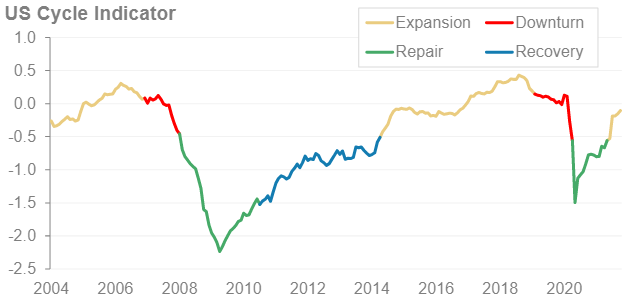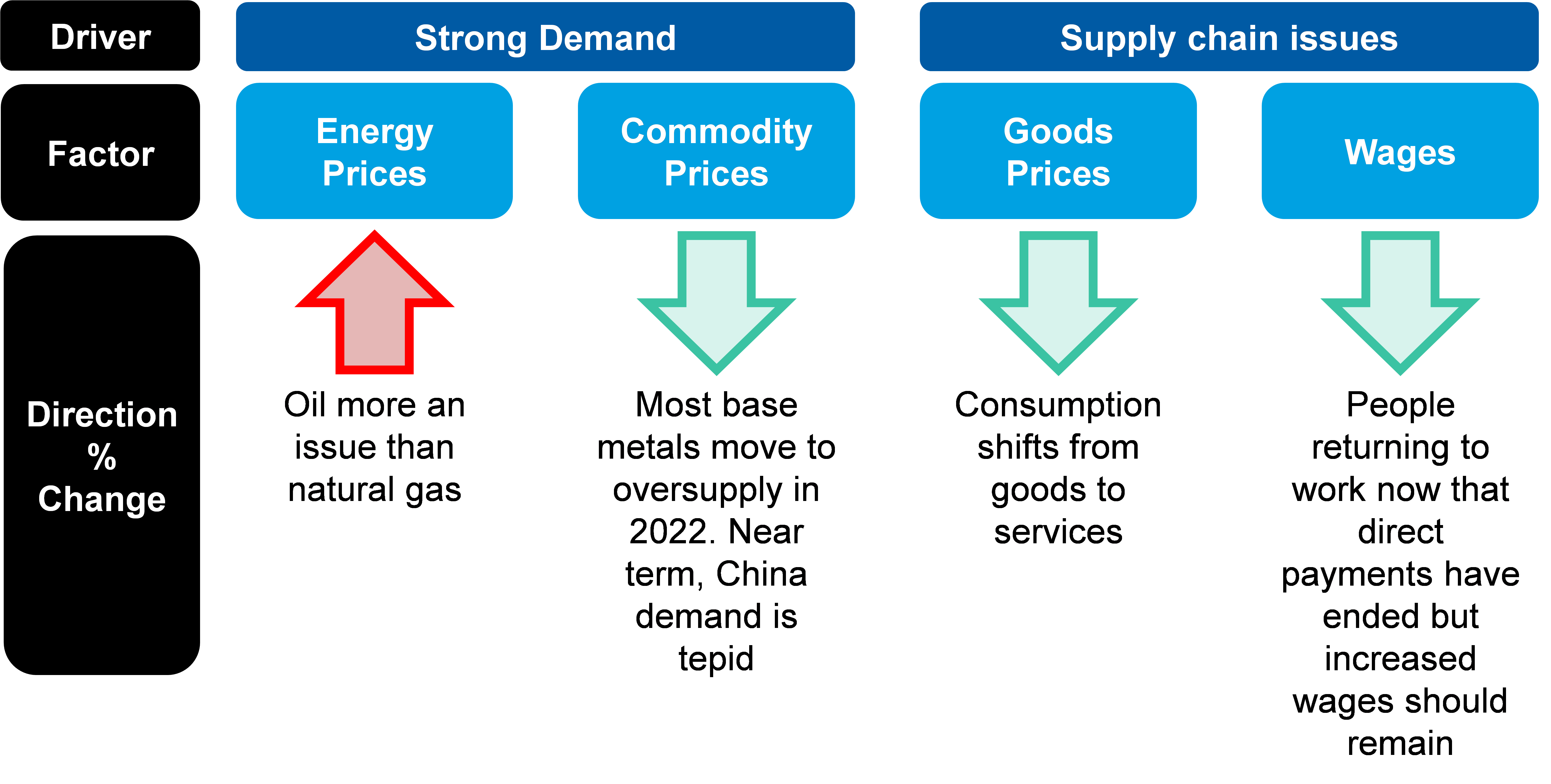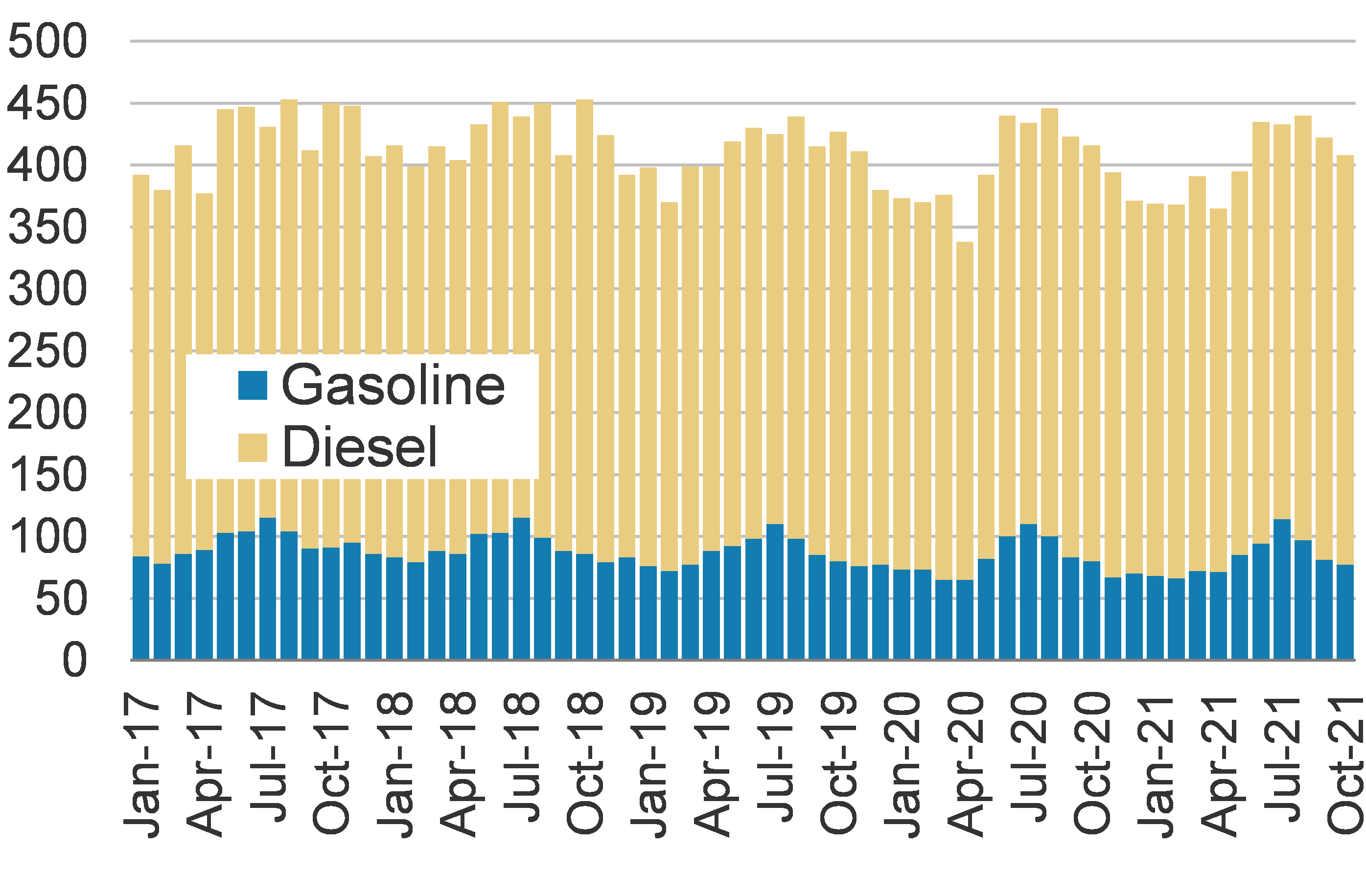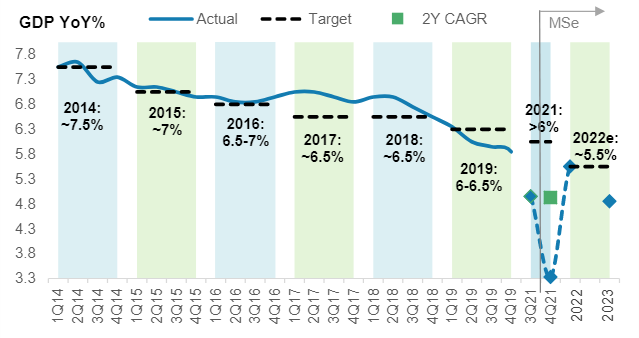2022 Global outlook - Omicron update
Morgan Stanley believes we are currently well into the middle of this current economic cycle, with our US cycle indicator now in the expansion phase (see Exhibit 1). Nineteen months have passed since the end of the COVID-19 recession, the shortest US recession ever, which lasted just two months from February to April 2020.
Moving forward, Morgan Stanley has six key views regarding the global outlook:
- Inflation is transitory.
- Global growth will remain above trend.
- Central banks will raise interest rates much slower than current market pricing.
- The new COVID variant Omicron, at least for now, is expected to have a limited impact on Morgan Stanley’s global growth forecasts.
- Australia is doing well.
- We continue to prefer Equities over Fixed Income.
Exhibit
1 – Morgan Stanley US Cycle Indicator well into “Expansion"

Source: Bloomberg, Haver Analytics, Datastream, Morgan Stanley Research.
Inflation is transitory
At this stage in the economic cycle, inflation is the key concern for markets given its influence on interest rates. Essentially, if inflation escalates, interest rates in general will surge in a similar fashion - leading to defaults and ultimately an end to the cycle. There are four broad sources of inflation, most of which we believe are transitory, but not all (see Exhibit 2).
Exhibit 2 – Some higher prices will remain but direction of travel is generally down over time

Source: Morgan Stanley Wealth Management Research
In terms of wage inflation, this has been impacted by people choosing not to work given the COVID-19 associated direct government payments supporting household income. With the end of these direct payments and lockdowns, we expect individuals to return to the workforce, and therefore the pressure to fill employment positions is likely to ease.
Inflation associated with physical goods has also been impacted by these direct government payments. For example, since April 2020, US furniture prices have risen around 30% and used car prices have increased around 40%. However, with mobility returning to society, households are shifting their consumption back towards services. The delivery of movies, meals, and experiences should alleviate pressure on physical supply chains and generally lead to price declines in physical goods.
Commodity prices have also similarly risen sharply. Since the recent recession's end, economic activity has accelerated and supply has not kept up. However, Morgan Stanley believes that most commodities (including the base metals - in particular, copper and zinc) will likely move back into oversupply situations next year, which should also lead to outright declines in commodity prices. However, iron ore is a notable exception as Morgan Stanley believes prices have likely bottomed and should be supported by improved trading conditions in China in 2022. We see iron ore averaging US$95/tonne in 2022.
Regarding energy prices, natural gas prices have already started to roll over. After rising around 1500% since April 2020, the benchmark Dutch natural gas price has retreated. Russia has started to inject gas back into the European system, where we see inventory levels largely back to long term average levels. Oil is another key exception to our theme of falling prices. In the near term, OPEC+ supply management and surging global economic activity underpins oil prices. In addition, based on a more secular basis, Morgan Stanley has observed that industry capital expenditure in 2020 fell to ~$350 billion (after reaching ~US$475 billion in 2019). In 2014, this investment stood at ~US$740 billion. According to the International Energy Agency's (IEA) 2050 global net-zero scenario, the oil and gas industry will still need to spend ~US$365 billion over the next decade to meet demand at that future point. As first production can be decades after making the initial capital investment, we believe the industry is positioning for a net-zero future, despite demand currently looking nothing like it. For example, in Norway, where electric vehicles account for ~70%+ of new car sales, the demand for diesel and gasoline has remained flat for the past five years (see Exhibit 3). Morgan Stanley is not suggesting oil demand will not change, rather we believe supply should peak before demand - leading to upward pressure on prices.
Exhibit 3 – Norway auto gasoline and diesel sales (ML) have remained flat, despite electric vehicles accounting for ~70%+ of new car sales

Overall, however, inflation is a "rate of change" measure meaning prices have to rise substantially once again to become problematic. For example, used car prices would need to increase another ~40% to repeat the same undesirable impact on inflation, and we believe this scenario is unlikely. Accordingly, Morgan Stanley expects global inflation to peak over the next 12 months and, for the US market, we see Core PCE inflation peaking over the next few months.
Exhibit 4 – Inflation to peak
Source: IMF, Morgan Stanley Research forecasts. Note: Global aggregates for inflation is PPP-based GDP-weighted averages, using PPPs; CPI numbers are period average. Global consumer price inflation aggregates exclude Argentina; Japan CPI includes impact of VAT and free child education.
Growth above trend over forecast horizon
Morgan Stanley's global growth forecasts continue to be well-above consensus forecasts. We have observed strong business investment in the US and the larger Emerging Market countries (Brazil, Russia and India), which has led to the fastest cyclical recovery in business investment since the 1940s. This investment has focused on manufacturing machinery as well as IT-related equipment and software. Similarly, consumption remains robust - supported by fiscal payments - leading to households globally mostly holding significant levels of excess savings. For example, for the US, Australia, China and Europe we estimate excess savings as a percentage of GDP at approximately 10%, 10%, 5% and 4%, respectively.
Exhibit 5 – Global GDP Growth Forecasts
Source: Haver Analytics, Bloomberg, IMF, national sources, Morgan Stanley Research forecasts; Note: The global aggregate is a weighted average using GDP (PPP) weights. Cons = consensus.
Europe and Japan remain our preferred regions. Generally, individuals returning to work are supporting household incomes. Furthermore, ongoing COVID stimulus payments should help Europe's steady economic rebound, while Japanese exporters should continue to be direct beneficiaries of the surge in corporate investment.
The "Great Inventory Build" and fiscal stimulus should also assist the US. Morgan Stanley estimates that over the past 18 months, US inventories have fallen by ~US$1 trillion, with ~40% of that concentrated in the automobile industry. This normalisation in supply chains, along with the shift in spending towards services and companies relaxing Just-in-Time practices, should drive a build-up in inventory levels. Morgan Stanley sees the restocking of inventories as adding 0.8% to US GDP growth in 2022 on a 4Q/4Q basis. We still also believe the Build Back Better legislation will be passed before year-end, contributing to deficit expansion and supporting growth.
We believe an imminent policy pivot will occur in China. China has focused on reforms which unfortunately have brought negative economic consequences. Prioritising decarbonisation and clean air has led to chronic power shortages, while removing financial leverage from the property sector resulted in sales falling materially - with construction activity following closely behind. Furthermore, regulations on corporate behaviour and ensuring data security have impacted the technology sector. Lastly, the zero-COVID policy has nearly eliminated the virus nationally, but the sudden lockdowns have impacted the economy. Morgan Stanley believes over the coming months, credit will flow more freely into infrastructure and manufacturing investment, in turn supporting a rebound in economic activity moving into 2022.
Exhibit 6 - GDP growth to reach 5.5%Y in 2022 amid policy easing

Source: CEIC, Morgan Stanley Research
Markets are mispricing when major central banks will increase interest rates
Given our view on inflation and global growth, Morgan Stanley believes major central banks will not raise interest rates as fast as the market is pricing (see Exhibit 7), in turn leading to yield curve steepening. For example, looking at the US, by the end of 2022, we see the Federal Fund Rate (which is the overnight rate) still near zero while the US Government 10 Year Bond rate will be at 2.1%. A steepening yield curve is consistent with the mid-cycle as the general interest rate environment should be rising as the cycle matures.
It is important to note that the neutral Federal Fund Rate is 2.5%, meaning monetary policy must exceed this level before it becomes a headwind to economic growth. Coupled with our view that global growth will remain above long-term trend growth, we believe there is more upside to this cycle.
Exhibit 7 – First central bank interest rate increase: Morgan Stanley versus Market Pricing
Source: Haver Analytics, Bloomberg, Morgan Stanley Research forecasts. Market pricing for the first interest rate increase as at 26 November 2021.
Omicron impacts are limited for now
In assessing the impact of the new COVID variant Omicron, we are watching for details on its transmissibility and impact on vaccine efficacy as well as on hospitalisations and mortality rates. Should this new COVID variant turn out to be more transmissible than the Delta variant, it could pose lockdown risks in Asia. However, Morgan Stanley’s biotechnology analysts point out that the emergence of the C.1.2 variant several months ago raised the same risk. This variant was initially believed to have a 15% transmission advantage over the Delta variant, but today it still represents <5% of cases in South Africa.
Vaccine manufacturers have already started to test their vaccine efficacy against this new variant. Our biotechnology analysts expect that it will take ~2 weeks before initial results are out.
The economic impact from Omicron might not be as severe as the consequences of the Delta outbreak given in recent months policymakers have tended to rely more on targeted and selective lockdowns rather than full lockdowns. This action is supported by the generally higher levels of vaccination.
The overall economic impact will likely vary by region (see Asia Economics: Assessing the risks from the new COVID variant, 28 November 2021) but our view is that the impact on fourth quarter 2021 GDP should be limited as this is a new variant and the starting point of cases is relative low. The risks are more prone towards the first quarter of 2022 as well as dependent on the evolution of the Omicron outbreak.
Australia is doing well
In this global context, Australia continues to do just fine. There has been limited impacts to the economy due to the lockdowns in Victoria and New South Wales, and Morgan Stanley has upgraded our 2022 GDP forecast to 4.4%. We believe corporate investment will return after a promising trend before the lockdowns. The easing of international borders is another source of growth as net migration has traditionally been a strong growth driver. Before COVID, net migration contributed about half of Australia's long term trend growth. We also expect the Australian dollar to reach 79 cents against the US dollar by the end of 2022. We have a differing view to the market regarding the US Federal Reserve's monetary policy pathway, which we believe is likely to lead to US dollar weakness in the back half of 2022 - and thus a stronger Australian dollar.
Positioning
We have a constructive view on equities for the next 12 months but have moved back to neutral tactically given rising short term uncertainty. Omicron is also contributing to these short term risks. Within Equities, we have a relative preference for International (specifically Europe and Japan) over Australia. At a sector level, we prefer Healthcare, Financials, REITs and reasonable priced secular technology companies. We prefer the Vanguard Global Value Equity Active ETF (VVLUE), Vanguard FTSE Europe Shares ETF (VEQ), Betashares Japan ETF (HJPN), VanEck MSCI World ex-Australia Quality ETF (QUAL) and Capital Group New Perspective Fund (APIR: CIM0006AU).
We are underweight Fixed Income, but notably continue to prefer lower quality corporate debt over long-dated government debt. That said, we continue to remind investors that despite their low yields, a well-diversified portfolio should still include an allocation to long-dated, high-quality bonds as they help manage overall portfolio risk during periods of unexpected volatility. For corporate debt, we prefer high income floating rate debt, with loans the most attractive. We prefer the Vanguard Australian Government Bond ETF (VGB), Pendal Sustainable Australian Fixed Interest Fund (APIR: BTA0507AU), and the Bentham Global Income Fund (APIR: CSA0038AU).
Learn more
Please click 'Contact' if you would like a copy of the full Morgan Stanley report.
Specialist advice from Morgan Stanley
Morgan Stanley Australia focuses on providing individuals and institutions with specialist strategic advice and then helping implement these strategies through superior investment execution. For more of my insights, follow me here.
5 topics
1 contributor mentioned

